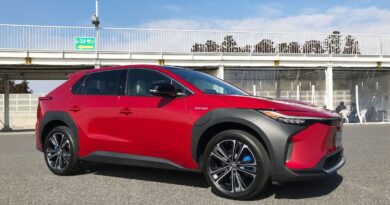How Honda’s new wind tunnel makes an IndyCar difference
Rules. Every racing series from quarter midget to NASCAR to IndyCar requires teams to adhere to what seems like a byzantine labyrinth of rules.
The requirements — which govern everything from the size, thickness and placement of decals to the engine’s size and power output — help ensure cars from different teams are close to identical in specification. That can make for extremely close races, where the skill of the driver and the team’s strategy of managing the race becomes more important than raw horsepower.
The section that governs aerodynamics in the 2022 IndyCar series rulebook covers 10 pages. After reading those regulations, you might think there isn’t much Honda’s aerodynamic engineers working in the company’s new $124 million wind tunnel in East Liberty, Ohio, can do to improve the performance of Honda-engined cars running in the NTT IndyCar Series races such the Indy 500 on Sunday, May 29.
You’d be wrong.
While the rules drastically limit what race team engineers can physically do to alter their cars, the learnings in the wind tunnel are expected to give engineers advantages over the competition as they get a greater understanding of the forces that act on the car as it navigates racetracks at speeds that can reach 240 mph.
Honda’s tunnel, powered by a 6,700-hp General Electric electric motor, can generate wind speeds as high as 193 mph.
“The closer you get to that top speed, the more accurate your data will be in reflecting those track conditions,” says Drew Wetzel, a senior aerodynamics engineer who works at the new wind tunnel, a project five years in the making.
The wind tunnel is at Honda Automotive Laboratories of Ohio, or HALO, about 15 miles west of Marysville, where the automaker has one of its largest North American plants. The tunnel was formally opened this spring and will be mostly used to test consumer vehicles. But Honda has carved out time in the facility’s busy schedule for testing race cars.
All North American aerodynamic testing is expected to be consolidated at the new wind tunnel, a move the automaker sees saving time and money.
Wetzel said Honda has been shipping race cars to Concord, N.C., where they were tested in the Windshear tunnel operated by Haas Automation.
“As far the metrics of the two facilities, the top [wind] speed is one key attribute,” Wetzel told Automotive News. Honda’s new wind tunnel has technology not found in other tunnels, he said.
“Some other features we have here at the tunnel detail how the [race] courses are measured. It’s a bit different. When we test cars in the wind tunnel, we are looking to measure the aerodynamic forces, the downforce and the drag. One of the features of the HALO tunnel is that we can actually measure the drag force beneath the rolling road module. That will be a unique feature.”
In other words, sensors that measure aerodynamic drag on the car will be able to eliminate the drag created by the rolling resistance of the tires. And engineers can measure the air coming off the car and the air around it.
“We can mount any number of flow probes that can measure all kinds of [airflow], and that will help us understand why aerodynamic performance is the way it is from different bits and pieces on the car,” Wetzel added. IndyCar rules allow for aerodynamic changes to the car depending on the type of track at which the race is run.
For the 2022 IndyCar season, all the cars will be built by Dallara, an Italian company, and powered by engines made by Honda and Chevrolet. While most of the attention from fans and racing analysts will be focused on the engines, the work of the aerodynamics engineers will play a key role.
General Motors has a wind tunnel at its Warren, Mich., technical center, but it is not used for IndyCar aerodynamic testing. Chevy-powered cars mostly use the Windshear facility, said spokeswoman Judy Kouba Dominick.
Lower wind resistance helps reduce fuel consumption. Engineers are also studying airflow to monitor engine and brake cooling as well as how the car’s ride height affects performance.
Wetzel says the computers and sensors that measure a vehicle’s performance in the tunnel can be expanded.
“This is a Honda-owned and -run facility. We have the capability to improve the facility over time by adding different features. Being under the Honda umbrella gives us that advantage.”
Another advantage for Honda, explains facility manager Mike Unger, is cross-training as aerodynamicists working on both race cars and production vehicles change assignments.
“We believe there will be cross learnings from both sides,” Unger said. “That’s one of the unique opportunities we hope to come forward in the coming years. By putting all these people together, who have the same goals but have different experiences and perspectives, we expect to see new measurement techniques and new ways of thinking.”
Source : Autonews.com




